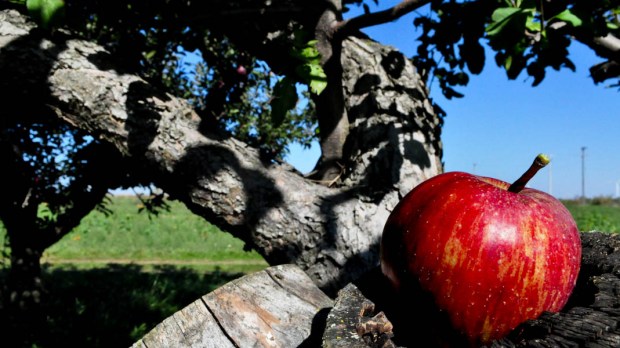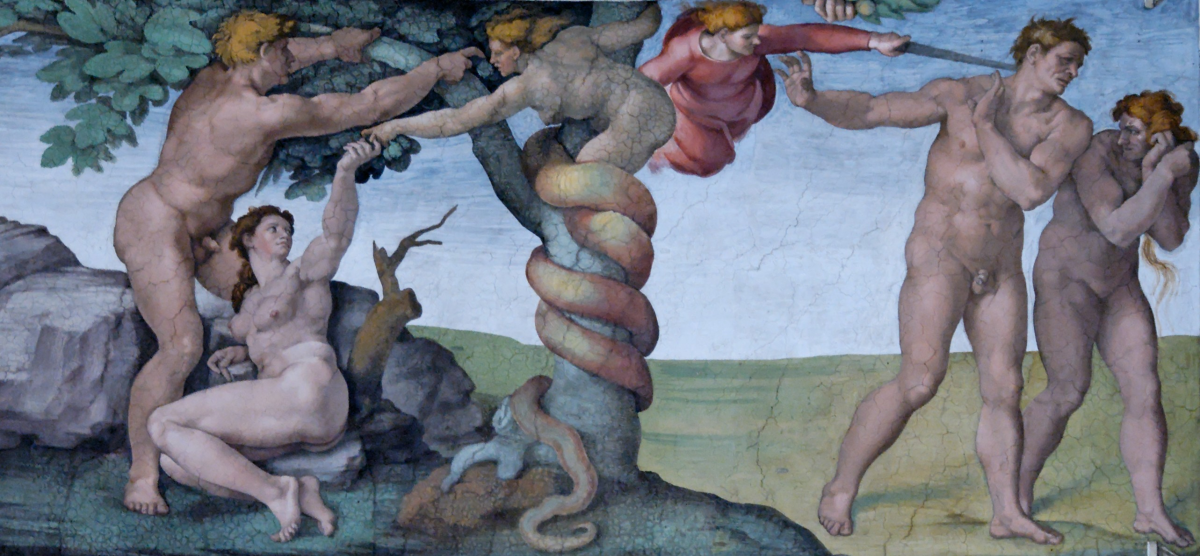It has been 351 years since the English poet John Milton completed his great work Paradise Lost, a dramatization of the story of the Fall of Man. Through more than 10,000 lines of poetry, arranged into 10-12 volumes, Milton attempted to capture the humanity of the biblical tale, which revolves around the fruit of the Tree of Knowledge: an apple.
The apple, however, is not mentioned in the Book of Genesis. Of course, the Tree of Knowledge is known to bear fruit, but that’s as much detail as we get. For example, in Genesis 3:2, Eve does not specify what kind of fruit it is:
The woman answered the snake: “We may eat of the fruit of the trees in the garden; it is only about the fruit of the tree in the middle of the garden that God said, ‘You shall not eat it or even touch it, or else you will die.’”
Similarly, Milton begins his epic with the ambiguous biblical term:
Of Mans First Disobedience, and the Fruit Of that Forbidden Tree, whose mortal taste Brought Death into the World, and all our woe
Milton, however, would go on to specify the fruit as an apple, but how did he deem an apple to be enticing enough to tempt our primordial ancestors? The answer lies all the way back with our early Christian fathers.
In the 4th century, St. Jerome was the leading scholar of scripture to Pope St. Damasus, who ordered St. Jerome to translate the Hebrew and Greek Bible into the commonly spoken version of Latin. The process took nearly 15 years and led to the Vulgate — a key Latin translation of the Bible — written in the most common tongue of the West at the time. As it happens, the Latin words for “evil” and “apple” are the same: malus.
Robert Appelbaum, professor of English literature at Sweden’s Uppsala University, explains to NPR that the Hebrew Bible uses the word peri to describe the fruit, a generic term that encompasses all hanging fruit:
“Peri could be absolutely any fruit,” he says. “Rabbinic commentators variously characterized it as a fig, a pomegranate, a grape, an apricot, a citron, or even wheat. Some commentators even thought of the forbidden fruit as a kind of wine, intoxicating to drink.”
St. Jerome had many different fruits to pick from for his translation, but he chose the apple due the dual meaning and what it represented in the narrative. It would seem this saint, known for his hot temper, also had a penchant for puns.
Applebaum notes that the story does not end there:
“To complicate things even more,” says Appelbaum, “the word malus in Jerome’s time, and for a long time after, could refer to any fleshy seed-bearing fruit. A pear was a kind of malus. So was the fig, the peach, and so forth.”
This explains why artistic depictions of Adam and Eve are often surrounded by different fruits. For instance, in Michelangelo’s Sistine Chapel fresco the serpent is wound around a fig tree, but in a later envisioning by Lucas Cranach the Elder, the branches around them are adorned with apples.
Milton could be seen as following the cultural traditions of the time, but as a renowned Cambridge intellectual fluent in Latin, Greek and Hebrew, one with experience as secretary for foreign tongues to Oliver Cromwell, it seems likely that would have recognized St Jerome’s pun.
Applebaum believes the term was still ambiguous during Milton’s day:
“Even in Milton’s time the word had two meanings: either what was our common apple, or, again, any fleshy seed-bearing fruit. Milton probably had in mind an ambiguously named object with a variety of connotations as well as denotations, most but not all of them associating the idea of the apple with a kind of innocence, though also with a kind of intoxication, since hard apple cider was a common English drink.”
It was not until later that readers of Paradise Lost would consider an apple to be an apple and not any meaty seed-bearing fruit. As a widely read canonical work, Milton’s epic poem helped cement the apple as the “forbidden fruit.”


